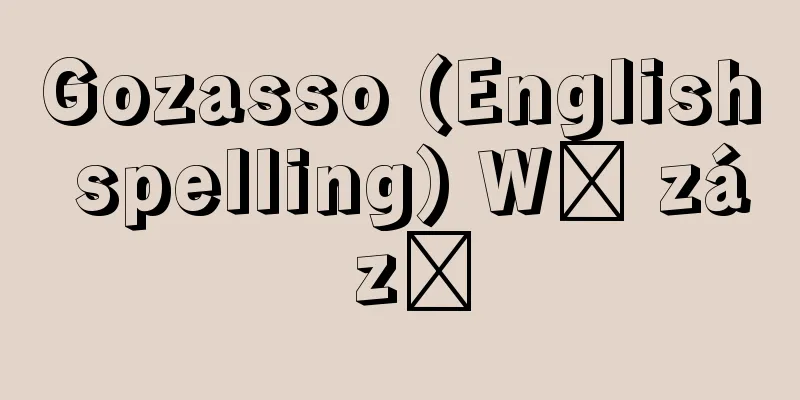Special demand - Tokuju

|
This refers to demand that arose specifically for the American military's war efforts in Asia. In principle, it refers to contracts for out-of-area procurement by the US military in Japan. In the post-World War II Asia strategy, the special procurement demand, which arose from the need of the US under the Cold War to utilize the potential of Japanese industry as an arsenal, also played a decisive role in the reorganization of Japanese monopoly capital, especially the revival of the military industry. The average annual contract value of the Korean War special procurement, which lasted for six years from the latter half of 1950 (Showa 25), was said to be 270 million dollars, and it was an important opportunity to improve Japan's balance of payments at the time. Moreover, it brought demand to the machinery industry, which had a huge amount of idle equipment after the defeat, and was also an opportunity to revive the monopoly. Following the statement by US Secretary of the Army Royal in January 1948, the Korean War special procurement, which saw the start of repair and production of military vehicles for Southeast Asia (1948) and the order for the construction of a military base in Okinawa (1949), determined the direction of the revival of Japan's military industry. In July 1950, General MacArthur ordered the creation of the National Police Reserve, and the revival of weapons production was rushed. One month before the Treaty of Peace with Japan and the Japan-US Security Treaty were concluded in September 1951, GHQ (Supreme Commander for the Allied Powers) lifted the ban on weapons manufacturing and returned 850 factories, including aircraft factories. However, orders for special demand subordinate to the war ignored Japan's monopoly on production plans and capital investment plans, and some factories were forced to cease operations. As a result, the Japan-US Mutual Defense Assistance Agreement (MSA Agreement) was concluded in March 1954 to meet planned and stable demand for weapons, and the direction of strengthening defense capabilities was also determined. The Vietnam special demand began with the US military aid to Vietnam, which began immediately after the French defeat in Indochina in July of the same year. At the peak of the Vietnam special procurement boom (1966-1968), which was based on the assumption that US ground forces would be fully deployed in 1965, it was said to have been worth more than $3 billion per year.In addition to direct special procurements (for aircraft and ship repairs), there were also indirect special procurements (local production in countries that took part in the Vietnam War, such as South Korea and Singapore) and special procurements by the US.Since then, these procurements have grown in scale and become more sophisticated, further strengthening the Japanese economy's dependence on the US. [Kato Kozaburo] Source: Shogakukan Encyclopedia Nipponica About Encyclopedia Nipponica Information | Legend |
|
アメリカ軍がアジアでの戦争遂行のため特別に生じた需要をいう。原則的には在日米軍の域外調達という契約で実現されたものをさす。第二次世界大戦後のアジア戦略において、兵器廠(しょう)としての日本工業の潜在能力を活用すべく、冷戦体制下のアメリカの必要から生まれた特需は、同時に日本独占資本の再編、とくに軍需産業の復活に決定的な役割を果たした。1950年(昭和25)後半から実質的に6年間続いた朝鮮特需の年平均契約高は2億7000万ドルといわれ、当時の日本の国際収支改善の重要なチャンスとなった。しかも、敗戦で膨大な遊休設備を持て余していた機械工業に需要をもたらし、独占復活の契機ともなった。1948年1月のロイヤル米陸軍長官の声明を受けて、東南アジア向けの軍用車両の修理生産開始(1948)、沖縄軍事基地建設の発注(1949)などの朝鮮特需は、日本の軍需産業復活の方向を決定づけた。50年7月マッカーサー元帥の指令による警察予備隊創設と相まって兵器生産復活が急がれ、翌51年9月の対日平和条約・日米安保条約に1か月先だって、GHQ(連合国最高司令部)は兵器製造を解禁、航空機工場など850工場を返還したが、戦争に従属する特需の発注は、日本独占の生産計画・設備資金計画を無視したため、操業停止工場も生まれた。そのため計画的・安定的な兵器需要に応じた日米相互防衛援助協定(MSA協定)が54年3月に結ばれ、防衛力増強の方向も確定的となった。同年7月のフランス軍のインドシナ敗北直後に開始されたアメリカのベトナム軍事援助を手始めにベトナム特需が始まった。65年のアメリカ地上軍の本格的投入を前提としたベトナム特需の最盛期(1966~68)には年間30億ドル以上といわれ、直接特需(航空機・艦艇修理)のほか間接特需(韓国、シンガポールなどベトナム参戦国家での現地生産)、アメリカ特需などがあったが、以後その規模も大型化・高度化し、日本経済の対米従属傾向をいっそう強めてゆくこととなった。 [加藤幸三郎] 出典 小学館 日本大百科全書(ニッポニカ)日本大百科全書(ニッポニカ)について 情報 | 凡例 |
>>: Tokushima Plain - Tokushima Heiya
Recommend
Pond spirit - Ikenosei
This is the title of Grimm's Fairy Tales No. 1...
Shun Tung - Shan Tang (English spelling)
A fabric made with tussah silk threads for the wa...
The Poet's Love - Shijin no Koi (English) Dichterliebe
A song cycle (Opus 48) composed by Robert Schuman...
Pre-capital - Pre-capital
Capital that existed since ancient times in the fo...
object relations theory
...Apart from constitutional factors (Freud belie...
Completely mixed state
...Industrially, mixing operations that handle ma...
Cachexia edema
…The causes of a decrease in albumin are insuffic...
Woods Hole Oceanographic Institution
... The marine laboratory, established in 1984 in...
Kino Haseo - Kino Haseo
A Chinese scholar and poet of the early Heian per...
Akiyama Kichigoro
… [History of Toys] It began in Europe in 1868 wh...
Sodium chloride molecule
...Chemical bonds are what connect the atoms that...
road stabilizer
… [Paving machinery] Finisher: A machine that spr...
Whirlpool type - Whirlpool chamber type
…However, in high-speed engines, this alone is in...
Cape Toi
The southernmost cape in Miyazaki Prefecture. It ...
Wood-hoopoe (English spelling)
A general term for birds of the family Phoeniculid...









